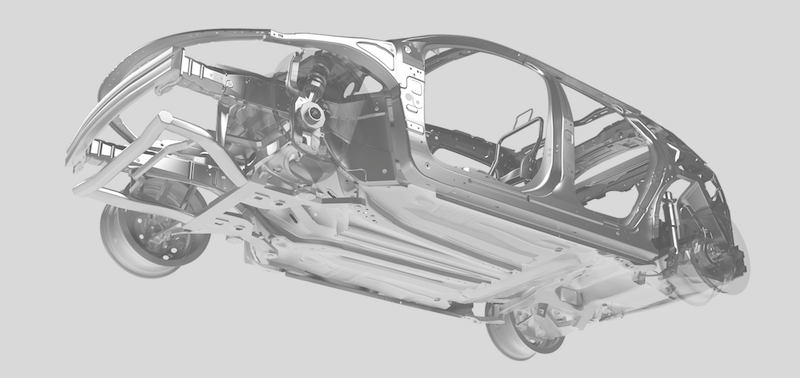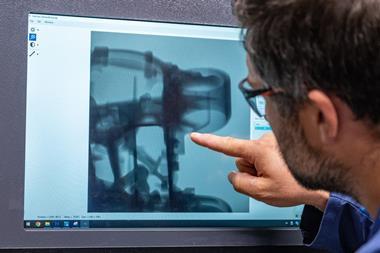SSAB explains how advanced high-strength steels address fundamental issues in a dynamic North American market, often at significant cost savings
 The North American car and truck market is undergoing change at a pace not seen since General Motors declared bankruptcy in 2009. In spite of rising transaction prices and higher fuel costs, the new-vehicle market remains strong, experts are reporting. “Consumers continue to buy trucks and SUVs at an accelerated pace, more than offsetting the ongoing drop in car sales,” said Karl Brauer, executive publisher for Autotrader and Kelley Blue Book.
The North American car and truck market is undergoing change at a pace not seen since General Motors declared bankruptcy in 2009. In spite of rising transaction prices and higher fuel costs, the new-vehicle market remains strong, experts are reporting. “Consumers continue to buy trucks and SUVs at an accelerated pace, more than offsetting the ongoing drop in car sales,” said Karl Brauer, executive publisher for Autotrader and Kelley Blue Book.
“Economic indicators suggest we’ll see this trend throughout the summer and fall, though talk of tariffs and the spectre of $4-plus-a-gallon fuel could end the party, and inventory levels remain relatively high at several automakers.” And in a world where autonomous and electric vehicles responding to ride-hailing apps is rapidly moving from theory to reality, the changes in automotive manufacturing and world car culture loom large. For one thing, renting a car ride may prove cheaper than owning a car. A recent special article in The Economist reports that ride-hailing services in the rich world currently cost around $2.50 per mile, compared with about $1.20 per mile to own and operate a private car. But the Uber or Lyft driver accounts for about 60% of the cost of ride-hailing.
UBS, an investment bank, reckons that automation, competition, and electrification will cut the cost of ride-hailing by 70%, to about 70 cents per mile. This means a typical Western household driving 10,000 miles a year could ditch its car, use robo-taxis and save $5,000 a year.
A rapidly approaching futureEconomics and culture aside, a world of fewer vehicles does not diminish the impact of fuel efficiency and vehicle safety. This presages a growing role for advanced high-strength steels in those cars and trucks to come.
“Everyone’s got their own take on the future,” says Brent Major, director, automotive and flat-rolled sales, Americas, for Sweden-based steelmaker SSAB. “Lightweighting in response to higher fuel-efficiency requirements along with improved vehicle safety remain vitally important.”
Automakers increasingly require a full spectrum of resources from their suppliers in the light of changing markets, and SSAB is no exception. The company entered the North American marketplace approximately 12 years ago, focusing on advanced high-strength steels, in particular its Docol brand.
Passenger safety was a particular driver behind the first generation of advanced high-strength steels going back to the 1980s. Improvements in strength and ductility roughly 10 years ago marked the second generation of AHSS, and new martensitic, QP (quenching and partitioning) and medium manganese steels form the emerging third generation.
Third-generation AHSS grades are the classic definition of a sweet spot for carmakers – high strength with better ductility and improved usability, according to SSAB. Ductility means these steels can be cold-formed to more complex geometries compared to first-generation AHSS and they can have sufficient ductility left in the material for crash performance after forming. In addition, third-generation AHSS could be a game changer for structural components in the body-in-white by offering superior strength-to-weight ratios and lower cost when replacing more expensive solutions like aluminium profiles or hot-stamped boron steels.
“We see our focus on advanced high-strength steels lending itself to more automotive requirements coming down the road as opposed to the status quo,” Major says. “With most mills, being profitable means keeping your mills full and running. If you’re producing standard steels, that’s what you’re running. SSAB, by comparison, wants to continue advancing up the value chain, producing stronger, lighter, and more sustainable steels for the automotive world that’s coming.”
Docol AHSSs are available in a number of types such as Martensitic (M), High Strength Low Alloy (HSLA), Dual Phase (DP), Complex Phase (CP), Dual Phase with High Formability (DH) and Press Hardening (PHS) steel.
Electric applicationsA cleaner world is in closer reach with the growing popularity of electric cars, and advanced high-strength steels are poised to play particularly appropriate roles. One big challenge, however, is to improve and extend the driving range of the batteries for electric cars. A primary way to do this is to reduce rolling resistance. Rolling resistance is affected by vehicle weight, so using lightweight and strong steel solutions will be very important.
As stronger, cold-formable grades of AHSS become available to OEMs, reducing the weight of complex components is possible without the costly and energy consuming process of hot-forming. Lightweighting opportunities via AHSS appear throughout car component design:• Bumpers – major weight savings while maintaining highforce absorption.• Chassis – excellent formability and fatigue resistance• Side-impact door beams• Seat frames• Cross members and structural components withoptimised shapes
Shape Corp., a leading US-headquartered automotive supplier in impact energy management, has been using Docol AHSS in its Power B-Section bumper for many years. It allows for thinner steel gauges and reduced steel consumption by up to 20%. Shape Corp’s patented MonoLeg bumper offers the performance and mass of an aluminium bumper, with the cost advantage of a steel solution. Shape Corp. designed a geometry that blends the strength of the Shape Corp. Power-B bumper with the torsion strength of tubular sections. MonoLeg improves torsion strength by 50% to combat the combined loading effect of these impacts.
By taking advantage of the high mechanical properties of AHSS and applying them to an optimal geometric design, the MonoLeg helps achieve fuel economy demands, including CAFE standards. A reduction in mass from a conventional steel bumper is achieved by roll forming the Shape MonoLeg bumper from AHSS, up to 1700 MPa. The characteristics of the Shape MonoLeg bumper can match those of 7000 aluminium alloys. Docol AHSS exhibits a pronounced yield strength increase of about 150 MPa or more after work-hardening and bake-hardening. Docol AHSS also exhibits a strain rate hardening effect. This corresponds to an increase of about 100 MPa at the high strain rates that are involved locally in a crash event.
For electric cars, new components are coming into play. A good example of this is battery protectors. Electric cars batteries are expensive and need to be protected from road debris or leaking hazardous material in the event of a crash.
Growth forecastThe viability of advanced high-strength steels is seen in North American growth for SSAB, Major reports. In 2018 alone, head count has grown from 10 to 17, and a larger sales and support presence for Mexico is also predicted. “The Mexico business is evolving very rapidly, and the strength, light weight, formability, and sustainability characteristics of AHSS are making it the right steel for a growing number of parts. North American automakers have an immediate opportunity for using it in a lot more vehicles.”







































